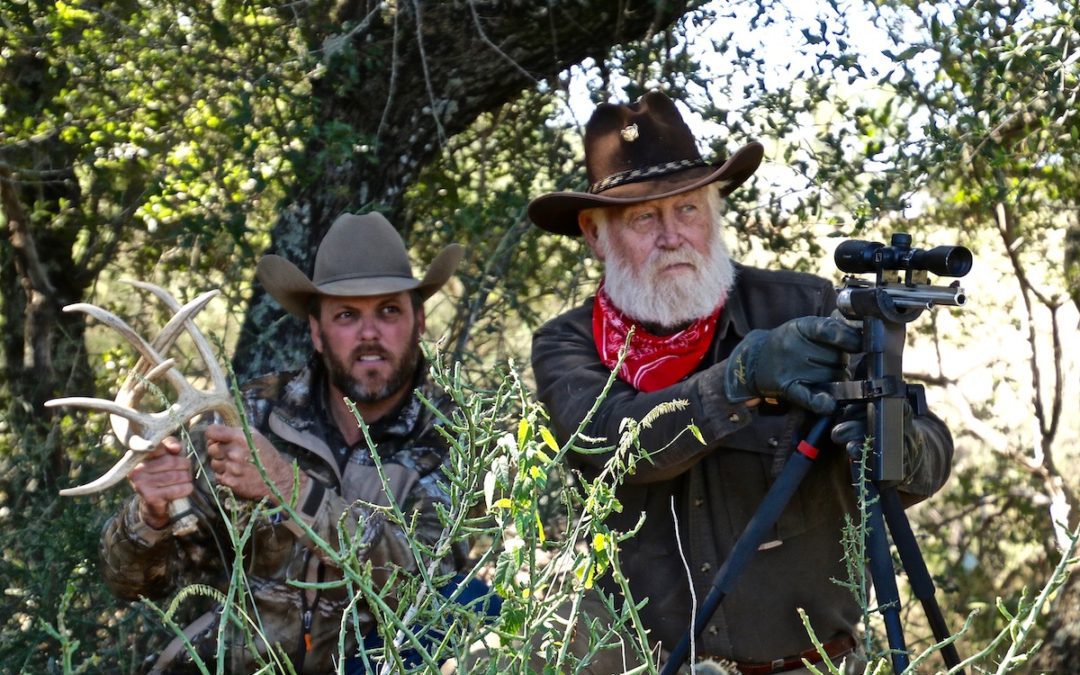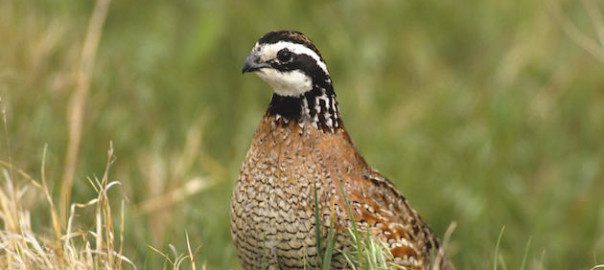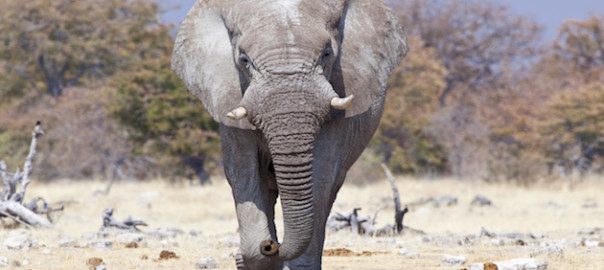Hunting with a handgun is challenging, but also great fun. Practice will make you proficient with whatever handgun you choose to use, but here are some tips to get you started.
Handgun hunting has long been a passion of mine. As of late, I have been hunting big game primarily with Ruger No. 1 single-shot rifles, however, I still regularly hunt hogs and whitetails with my Ruger single-action Blackhawk and double-action Redhawks whenever possible.
The principles of hunting with a handgun, which to me equates hunting primarily with a single-shot or revolver, single-action or double action, are simply like hunting with any other firearm in knowing what your capabilities are with the gun you choose to use. In recent times, Razor Dobbs, a fellow Texan, has been hunting quite a bit with a semi-auto 10 mm. I appreciate this is Razor’s choice for hunting. But, I’m a bit old school. To me handgun hunting equates to using single-shots such as those produced by Thompson/Center and revolvers produced by several manufacturers, my personal favorites of which are guns “built” by Ruger.
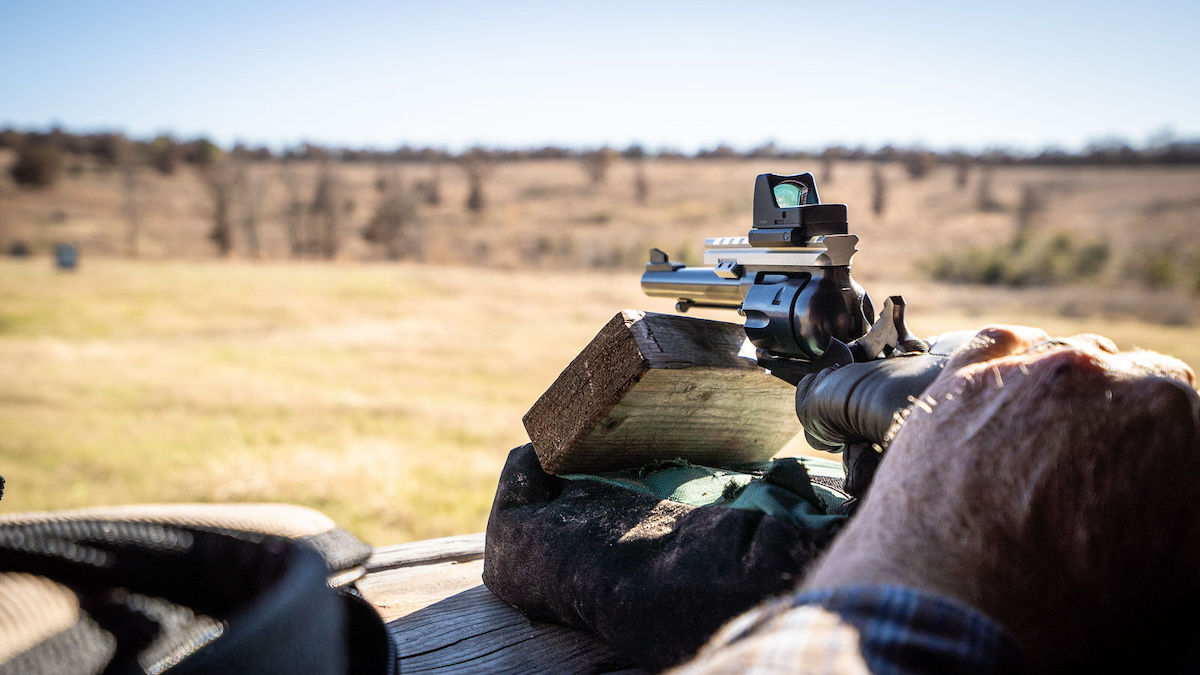
Larry’s Ruger Blackhawk topped with a Trijicon sight and loaded with Hornady 240-grain XTP.
Before getting into hunting with .357 Magnums let’s dig a bit into some of the basics of handgun hunting. Regarding revolvers, essentially there are single-actions, much like the guns often seen used in Westerns. Single-actions require the hammer be cocked before it can be shot. Double-actions can either be hammer-cocked before shooting or by simply pulling the trigger, which cocks the hammer in preparation for shooting.
Personally, I prefer single-action revolvers for hunting, especially when using larger caliber rounds. The “grip” of the single-action is smoothly curved from the hammer on down. With heavier recoiling rounds, this allows the single-action to roll back into your hand, which reduces the felt recoil. Double-action revolvers are designed with a bit of “knurl” on the upper grip that helps hold your hand in place when you put additional pressure on the trigger and frame so the hammer can be cocked. Because of the double-action revolvers’ grip design, the shooter “feels” the round’s full recoil.
Because I so long hunted with break-open single-shot handguns and single-action revolvers, even when I shoot a double-action, I tend to cock the hammer between shots. Wearing leather gloves also helps allow heavy-recoiling single-action revolvers to roll backward in my hand.
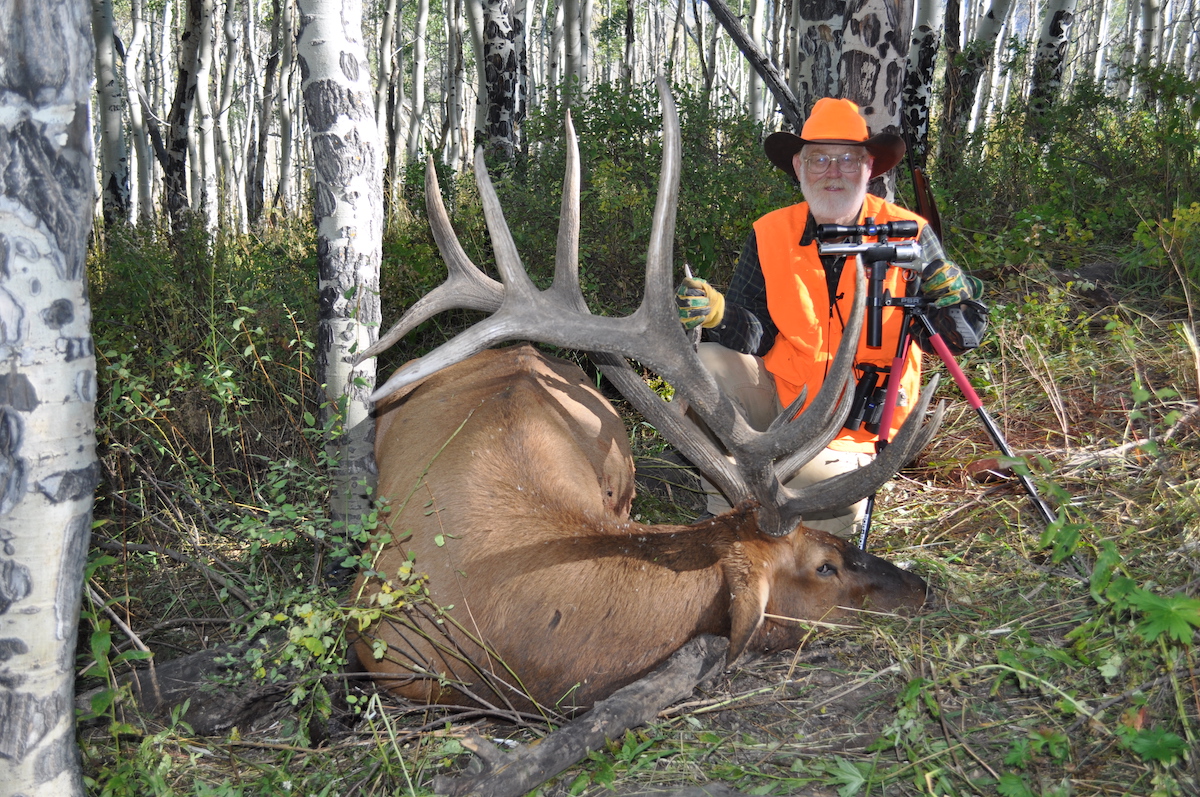
Larry with an elk taken with his Ruger Super Blackhawk using Hornady 240-grain XTP ammo.
Sights and Scopes for Handgun Hunting
Sights…I am jealous of those who have excellent eyesight that can see open sights. Me, to precisely place my handgun shots I need to use either a red-dot sight or a long eye-relief scope. In terms of scopes, I prefer variable, 2-7X with several inches of critical eye relief so I do not have to “trombone” my head closer to, or farther away from the scope’s objective. Before purchasing a long eye relief scope for your hunting handgun, I would suggest going to a sporting goods store and looking through several scopes to see which one fits you best. When hunting in fairly close cover to medium distances, I keep my scope magnification setting on 3.5 to 4X. Hunting truly tight cover, where shots will likely be 25 yards or less, I keep my scope set at 2X. Variable scopes give options for taking and making shots close in or far away.
More recently I have using Trijicon’s SRO, red-dot sights on my revolvers. I use bases manufactured by Weigand, Inc. designed for use specifically on Ruger handguns. I prefer the SRO sights with 2.5 MOA dots, which means the dot covers 2.5 inches at 100 yards. Such a dot is neither too big or too small, and is easily and quickly seen.
I usually sight-in for general hunting at 50 yards, but if specifically hunting whitetails, I sight-in at 100 yards. I would assume, based on where you live, in most instances you will be hunting in tight cover. If that is the case, I would sight-in to be dead-on at 25 yards. But then I would also shoot at 50, 75 and 100 yards to see exactly where such a sight-in places my bullets should an opportunity arise for a longer shot.
When it comes to shooting handguns (or rifles for that matter) I almost always shoot from a rest, rather than off-hand. However, I also practice shooting without any kind of a rest, should an opportunity appear up close and personal. While hunting, I have used all sorts of natural rests — trees, limbs, stumps, rocks, fence posts and the like. On occasion, too, I have used my western felt hat as a rest as well. So that I always have a rest handy, I carry manually adjustable tripod shooting sticks. That way, I have a rest no matter where I am. How or where you place your handgun on a rest, is a personal matter. Spend time at the range, or at home (with cylinder open or removed) practicing getting a solid rest. Shoot the way you are most proficient.
Whenever shooting handguns, wear hearing protection. Flinches are often developed because of the sound of the shot going off, rather than from recoil.
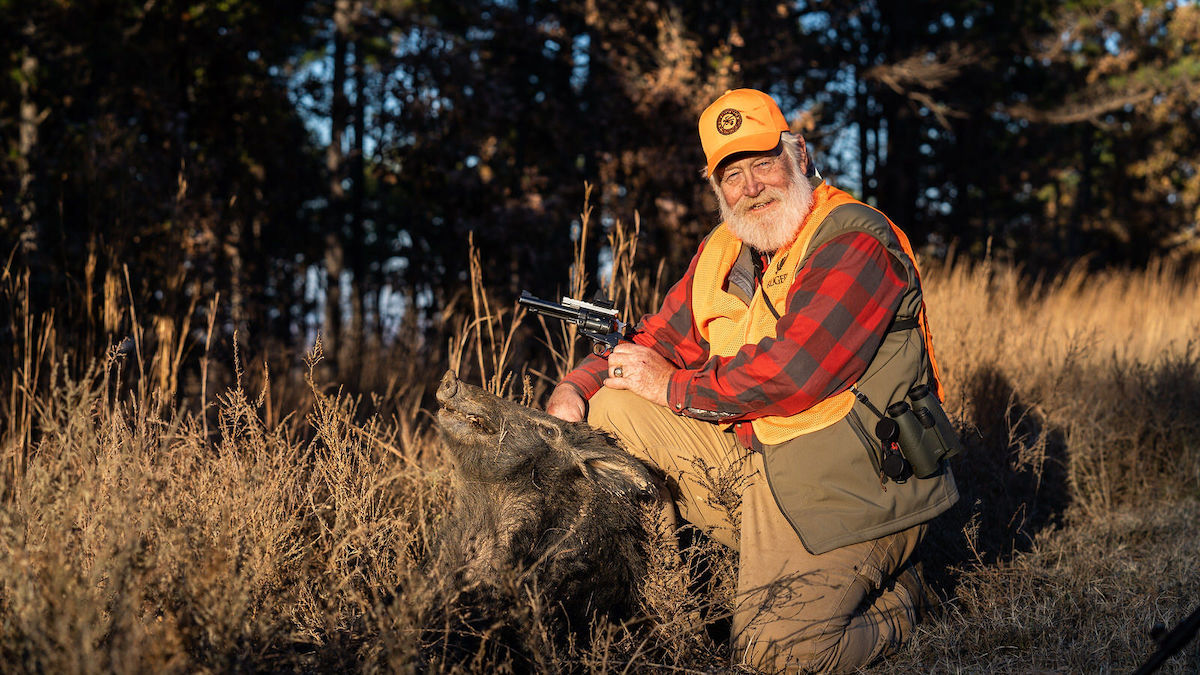
Larry took this wild boar on the Choctaw Hunting Lodge in Oklahoma using his Ruger .44 Mag. shooting Hornady 240-grain XTP.
Calibers and Rounds
Calibers and rounds. A few years ago, I carried a .357 Mag. quite regularly and did hunt with it some. I used it for deer and hog hunting. Back then, I primarily shot Hornady’s 158-grain XTP factory ammo. I was very selective in what shots I took, always trying to get as close as possible. I shot a couple of whitetail bucks and numerous does with my Ruger Blackhawk using this Hornady load. The XTP bullets served me well in terms of accuracy and downrange performance. The hogs and whitetails were taken at 50 yards or less. Shots were placed into the heart and lungs. As I recall, the longest blood trail I followed was about 60 yards, most were less than 30.
Hornady recently introduced its 130-grain MonoFlex Handgun Hunter loads. I have not had an opportunity to take an animal with these, but friends tell me they shoot extremely accurately in their revolvers and what deer and hogs they have shot with the new load have not gone very far.
I have great faith in Hornady’s 158-grain XTP ammo!
My personal feeling about the .357 Mag. when it comes to hunting is it’s an expert’s round. Shot placement with this particular cartridge requires expert shooting in putting the bullets precisely within the animal’s vitals. Should you decide to use your .357 Mag. hunting deer and hogs, I would suggest spending time at the range learning to accurately shoot your revolver at targets near and farther out from mere feet out to 75 yards. Beyond that distance the round’s terminal performance starts dropping quickly. In capable, experienced hands, the .357 Mag is certainly deer and hog worthy!
My choice in hunting handgun caliber/rounds for deer and hogs is the .44 Mag. Over the years, I have shot a variety of big game including bison, moose, elk, Alaska brown bear, caribou, black bear, pronghorn, mule deer, whitetail deer, Sitka blacktail deer as well as African plains game with handguns. I used such rounds as the .500 S&W Mag., .480 Ruger, .460 S&W Mag., .454 Casull and others in revolvers, as well as .30-’06, .308 Win., .30-30 Win and other rifle cartridges in single-shot, break-open handguns.
Frankly, my personal choice is the .44 Mag in a Ruger Super Blackhawk Hunter topped with Trijicon’s SRO sight, shooting Hornady’s 240-grain XTP factory ammo. My Ruger/Hornady/Trijicon combo places six shots into less than 2-inch groups at 100 yards, and I have shot 6-shot groups as small as one inch. With that same combo, however using a long eye relief scope, when I was doing a fair amount of shooting I could hit a 12-inch steel gong at 300 and 400 yards fairly regularly (fun to shoot such long ranges with my .44 Mag revolver, but I would never consider shooting at an animal at that distance).
Hunting with a handgun is challenging, but also great fun. But it is not unlike shooting any other firearm — the bullet goes where the barrel is pointed when the trigger is pulled, pure and simple. Practice may not make perfect, but it does make for great fun and becoming proficient with whatever handgun you choose to use.

Note: As a wildlife biologist, Larry Weishuhn established quality wildlife management programs on approximately 12,000,000 acres across North America with emphasis on habitat and animal populations. As a writer, he has served on staff on numerous publications in hunting, shooting and wildlife management and has long been involved with the highest quality outdoor television productions.
 A superb collection of stories that captures the very soul of hunting. For hunters, listening to the accounts of kindred spirits recalling the drama and action that go with good days afield ranks among life’s most pleasurable activities. Here, then, are some of the best hunting tales ever written, stories that sweep from charging lions in the African bush to mountain goats in the mountain crags of the Rockies; from the gallant bird dogs of the Southern pinelands to the great Western hunts of Theodore Roosevelt. Great American Hunting Stories captures the very soul of hunting. With contributions from: Theodore Roosevelt, Nash Buckingham, Archibald Rutledge, Zane Grey, Lieutenant Townsend Whelen, Harold McCracken, Irvin S. Cobb, Edwin Main Post, Horace Kephart, Francis Parkman ,William T. Hornaday, Sc.D, Rex Beach, and more. Shop Now
A superb collection of stories that captures the very soul of hunting. For hunters, listening to the accounts of kindred spirits recalling the drama and action that go with good days afield ranks among life’s most pleasurable activities. Here, then, are some of the best hunting tales ever written, stories that sweep from charging lions in the African bush to mountain goats in the mountain crags of the Rockies; from the gallant bird dogs of the Southern pinelands to the great Western hunts of Theodore Roosevelt. Great American Hunting Stories captures the very soul of hunting. With contributions from: Theodore Roosevelt, Nash Buckingham, Archibald Rutledge, Zane Grey, Lieutenant Townsend Whelen, Harold McCracken, Irvin S. Cobb, Edwin Main Post, Horace Kephart, Francis Parkman ,William T. Hornaday, Sc.D, Rex Beach, and more. Shop Now
